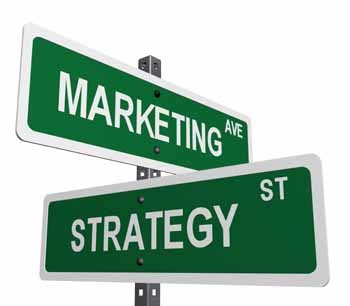
CONSUMER BEHAVIOR refers to the selection, purchase and consumption of goods and services by people for the satisfaction of their wants and needs. A supply chain is complete when we have [the] manufacturer and consumers. Often, a middle-man, known as the distributor/supplier, is needed to distribute the goods and/or services from the manufacturer to the consumer. Here’s how it all works:
- A manufacturer pumps goods into the market.
- A consumer decides which goods he needs from the manufacturer or supplier and purchases them.
- A consumer is likely to choose the basic goods first before he gives consideration of other secondary needs.
- The selection and subsequent purchase of these goods relies primarily on the amount of money the consumer has available. However, the ultimate price of the good may also be taken into consideration.
- Commonly, most consumers will opt for inexpensive and/or economical goods, especially if the business is new.
- There are several factors which can influence consumer behavior in the market. They range from various cultural, social and economic factors.
Culture is one aspect that influences consumer behavior in the market. Culture is the part of a society that guides the behavior of people in a particular society. Culture differs from one society to another; hence the consumer behavior changes from when examining different societies. This variant calls for the need of investors in any business to keenly study the culture of a particular region before investing there and will enable them know what a particular society demands.
Additionally, several cultural factors such as cultural beliefs have greatly affected consumer behavior. A business investor should always know what kind of goods are in demand in a particular area. It is advisable to study the religion and the geographical location of a place before infusing capital or taking stock in a project. This will help to ensure the delivery of the proper goods. For example, many religions don’t allow people to eat certain foods, so an investment in supplying these foods in such an area will be a sure way of drifting into losses.
Social Class is another major element of influence of consumer behavior. Social class clearly exists in every society; a circumstance where there are people belonging to the high and low classes. The high social classes represent the elites who are mostly dominating the upper working-class while the low social classes are characterized as the less fortunate. The line between these two classes of people determines the consumer behavior in any market. Members of the same social class tend to have the same consumer behavior. This behavior pattern calls for the need to have marketing activity shaped in regard to the social class.
There are various dynamics which determine a social class; these include income level, education and the even the type of job one has. And these social factors have also been known to influence consumer behavior in the market. These factors can include family status and the rank a member has in his or her society. Drilling further down, the members of a particular family can influence purchasing decisions. Buying can be influenced by the children, or either spouse of the family. If the decision of purchasing a particular product is influenced by the husband, it would stand-to-reason that marketers should opt for advertisement strategies that appeal to men.
Social Groups also influence behavior when it comes to the purchasing of goods from the marketplace. These groups can form a single attitude toward certain products; hence the consumer behavior toward the same product. Different people possess different roles and status in society based on the social groups, an extended family, and any organizations in which a person may belong. For example, if a person is a teacher, he may also be playing the role of a parent as well. These two roles will influence buying behavior.
Personal Factors such as lifestyle, occupation, age and personality will also influence consumer behavior. For instance, as people age, their purchase behavior of goods and services will keep changing. And the goods required by different age groups also alter at different ages. This calls for marketers to bring into the market a range of goods which will satisfy each age group.
The Occupation a member maintains in a society also influences buying behavior. A business professional will buy suits; a blue-collar laborer will buy casual clothes, which are fit for that job. Often, the occupation of a person can dictate their after-work lifestyle, which in-turn, ultimately affects their buying behavior at given times.
Psychological Factors are yet another element which influences consumer behavior. A person’s motivation to buying something greatly enhances a decision at the time of purchase. Some factors may be the result of a pressing need, while others may be of sheer impulse motivating the buyer into action.
There are various ways in which a sales professional can adjust to consumer behavior changes in the market. They can be as simple as having attractive displays or through quality advertising. These initiatives should try to create a good understanding with their customer and have a constant adjustment in their marketing strategy. A sales team's goal should be to align their advertising approach with their ever-changing consumers' behavior.
In today’s marketplace, a good marketer should fully utilize the internet. With a simple connection to the worldwide web, the internet can be utilized in countless ways. Marketers can have websites, blogs and social media channels to promote their goods to consumers on a constant basis. The virtual world has enabled marketers to reach a new and different consumer too.
A marketer should be aware of an always-changing society in areas such as gender roles and even with rapid advances in technology. These changes in society alter the consumption of some goods drastically. A seasoned marketer should always adjust to the changing society and deliver to the consumer their modified wants and needs. Simply put, a changing society leads to people being choosy and wanting choices at all times.
Knowing these critical fundamentals, a top marketer or sales professional should be able to:
- Build good relationships and equally value their customers as friends.
- Give their customers time to express feedback; good or bad.
- Understand their customer-base, and then help them with their buying needs.
- Create a good rapport and influence the customer to stay with their current buying habits.
These components embody a good strategy of dealing with the shift in consumer behavior in the market. Applying these principles and concurrently listening to a consumer’s needs is the key to success when learning to understand and adjust to consumer behavior changes in the marketplace.






















